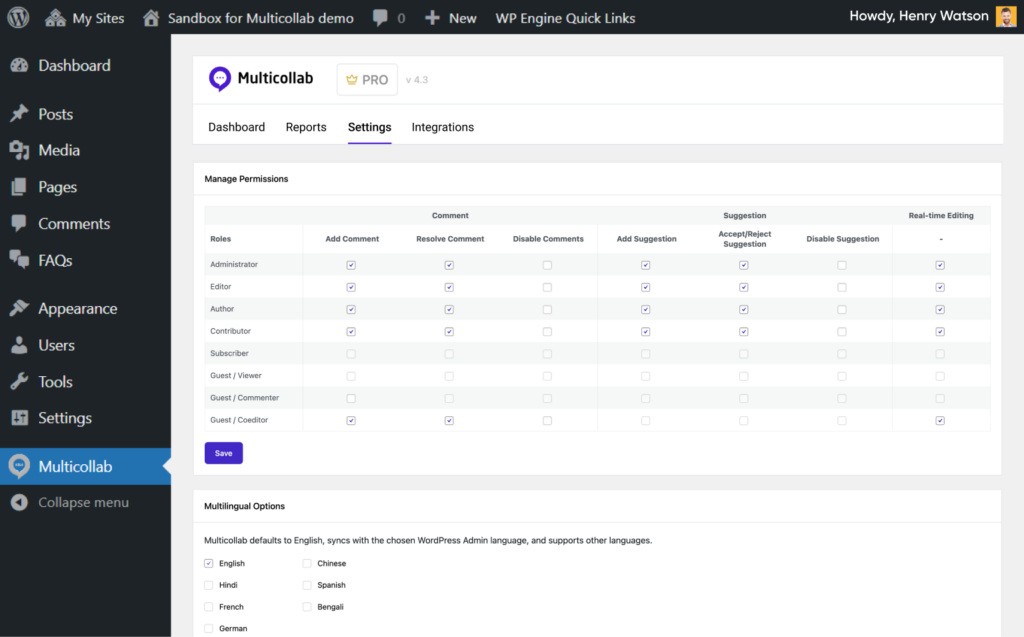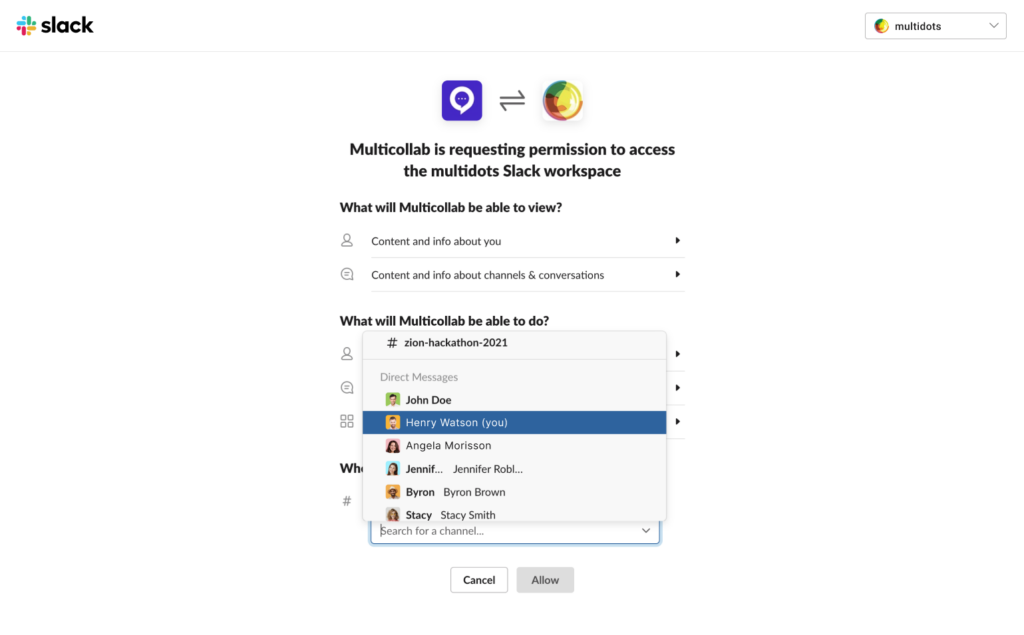Table of Contents
Content creation teams are the engine behind modern marketing initiatives, responsible for crafting diverse content formats that captivate target audiences. These teams play a pivotal role in enhancing brand awareness, nurturing customer engagement, and driving conversions.
Research indicates that a staggering 74% of companies say that content marketing effectively boosts lead generation. However, the effectiveness of these efforts hinges on effective team management.
In this article, we delve into the challenges content creation teams encounter. If your team is grappling with inefficiencies, fear not! This piece will furnish you with strategies, best practices, and tools to elevate your content creation projects to new heights.
Strategies for Building a High-Performing Content Creation Team
Choosing strategies tailored to the unique needs of your team is essential for building a high-performing content creation team. Let’s explore the key strategies that can help your team achieve this goal.
Hiring the Right Talent
Building a high-performing content creation team begins with identifying and hiring the right talent for essential roles. These roles typically include content strategists, writers, editors, designers, and SEO specialists. To begin with, it’s important to identify the key roles.
1. Identify Key Role
Content Strategists: Responsible for planning and managing content projects, aligning content efforts with business goals.
Writers: Skilled in producing engaging, informative, and SEO-optimized content tailored to the target audience.
Editors: Ensure content clarity, coherence, and consistency, refining drafts to meet quality standards.
Designers: Create visually appealing graphics and multimedia content that enhance the overall presentation and engagement.
SEO Specialists: Optimize content to rank higher in search engine results, driving organic traffic to the content.
2. Skills Alignment
Content Strategists: Strong planning, project management, and analytical skills.
Writers: Excellent writing, research, and storytelling abilities.
Editors: Attention to detail, strong grammar, and the ability to maintain consistent tone and style.
Designers: Proficiency in design software, creativity, and an eye for visual aesthetics.
SEO Specialists: Deep understanding of SEO best practices, keyword research, and analytics.
3. Hiring Process
Create Detailed Job Descriptions: Clearly outline the key competencies and attributes needed for each role.
Leverage Professional Networks: Use platforms like LinkedIn to find and attract qualified candidates.
Assess Previous Work: Review candidates’ portfolios to evaluate the quality, style, and relevance of their past work.
Administer Practical Tests: Use assignments to evaluate specific skills, such as writing tests for writers or design tasks for designers.
Conduct In-Depth Interviews: Involve team members or subject matter experts to assess technical skills and knowledge thoroughly.
4. Define Clear Goals
Define what success looks like for your content team. Set SMART goals (Specific, Measurable, Achievable, Relevant, Time-bound) such as “increase blog traffic by 20% within the next quarter.” Ensure each team member understands their specific responsibilities and contributions. Regularly communicate these goals and use project management tools to monitor progress and make adjustments as needed.
5. Cultural Fit
Hiring individuals who fit the company culture is crucial for building a cohesive and high-performing content creation team. Cultural fit means that new hires share the company’s values, work ethics, and overall mission, which fosters a sense of belonging and commitment.
To ensure cultural fit, arrange for candidates to meet with potential team members, conduct behavioral interviews, and consider trial periods. This approach fosters effective collaboration, reduces conflicts, and improves productivity, leading to long-term team success.
Successfully Managing Your Team
Managing a content creation team effectively requires attention to several key areas that foster collaboration, creativity, and productivity.
Clear Communication Channels: Establishing clear communication channels is vital for ensuring that team members understand tasks, goals, and expectations. Tools like Slack or Microsoft Teams facilitate real-time communication, reducing misunderstandings and delays.
Encouraging Creativity: Grant your team the freedom to explore new ideas and experiment with different content formats. Recognize and reward innovative and high-quality work to incentivize creativity and maintain motivation.
Project Management Tools: Utilize project management tools such as Asana or Trello to organize tasks, set deadlines, and track progress. These tools streamline workflow management, speed up content creation, enhance transparency, and promote efficient collaboration among team members.
Fostering a Collaborative Environment: Foster a collaborative environment through team-building activities and open communication. Encourage brainstorming sessions and cross-functional collaboration to harness diverse perspectives and enhance problem-solving.
Continuous Improvement: Emphasize continuous improvement by regularly evaluating and refining processes. Stay adaptable to industry changes and evolving trends to ensure your team remains agile and responsive. This proactive approach supports long-term team growth and success in content creation.
Common Challenges in a Content Team
Hiring vs Outsourcing:
Content managers often face the dilemma of whether to build an in-house team or outsource content creation. Each option presents distinct challenges and benefits that must be carefully weighed based on specific business needs.
| Aspect | Challenges | Benefits |
| Hiring In-house | Talent Acquisition: Securing high-quality talent with the requisite skills can be tough. According to surveys, more than half of marketers (52%) say that finding the right talent is their number one challenge due to competitive demand and skill shortages. | Brand Consistency: In-house teams offer greater control over brand voice and ensure alignment with company values, crucial for maintaining brand integrity. |
| Cost Implications: Maintaining an in-house team incurs significant expenses such as salaries, benefits, and ongoing training costs. These financial commitments require careful budgeting and resource allocation. | Deep Product Knowledge: Team members intimately familiar with the product or service can create content that resonates more authentically with the target audience. | |
| Outsourcing | Quality Control: Ensuring consistent content quality and maintaining brand consistency can be challenging when outsourcing. Differences in editorial standards and communication barriers may arise. | Cost Efficiency: Outsourcing can be more cost-effective as it eliminates recruitment, training, and management costs associated with an in-house team. |
| Communication Barriers: Managing content across different time zones and cultural contexts can lead to delays and misunderstandings. | Access to Global Talent: Leveraging outsourcing provides access to a diverse talent pool globally, offering fresh perspectives and specialized expertise. |
The decision between hiring in-house or outsourcing hinges on specific business objectives, budget considerations, and the need for specialized skills. Both approaches offer distinct advantages and challenges, requiring careful evaluation to determine the best fit for your content creation strategy.
Maintaining Consistent Quality:
Ensuring consistency in tone, style, and quality across all content poses a challenge, whether your team is in-house or external. To address this, develop a detailed content style guide, provide regular training, and conduct consistent content audits.
Utilize collaboration tools for effective communication and implement a robust editorial process involving multiple rounds of content review to uphold high standards. These measures promote coherence and excellence in content creation, enhancing brand credibility and audience engagement.
5 Steps of the Content Creation Process
Follow these steps to ensure that your content creation process is well optimized.
1. Planning and Research
Define Objectives: Clearly outline the goals of your content. Determine whether your aim is to increase website traffic, boost engagement, generate leads, or achieve other specific outcomes. Defining clear objectives provides a roadmap for content creation and measurement of success.
Audience Research: Understand your target audience’s needs, preferences, and pain points. Utilize tools like Google Analytics, social listening platforms, and surveys to gather valuable insights. This information informs content strategy and ensures that your content resonates with your audience.
Keyword Research: Identify relevant keywords that your audience is searching for. Tools like SEMrush, Ahrefs, or Google Keyword Planner can help identify popular search terms and inform content optimization strategies.
Content Calendar: Develop a content calendar to plan and schedule your content. This helps maintain consistency in publishing and ensures timely delivery of content. Tools like Planable and Hootsuite streamline the scheduling process and facilitate collaboration among team members.
Competitive Analysis: Analyze your competitors’ content strategies to identify gaps and opportunities. By understanding what content is already available in the market, you can create unique and valuable content that stands out to your audience.
Resource Allocation: Determine the resources required for content creation, including time, budget, and tools. Assign responsibilities to team members based on their skills and expertise, ensuring efficient execution of the content plan.
By following these steps, you can lay a strong foundation for successful content creation that resonates with your audience and achieves your business objectives.
2. Ideation
Thought Shower Sessions: Foster a culture of creativity by conducting regular thought shower sessions with your content team. Encourage brainstorming and diverse perspectives to generate innovative ideas. Online workspace tools like Miro facilitate collaborative ideation, allowing team members to contribute and visualize concepts effectively.
Topic Generation: Utilize tools such as BuzzSumo, AnswerThePublic, and HubSpot’s Blog Ideas Generator to identify trending topics and questions your audience is asking. This research ensures that your content remains relevant and addresses the needs and interests of your target audience.
Content Formats: Choose the most appropriate content formats, such as blogs, videos, infographics, or podcasts, to effectively deliver your message and engage your audience. While various formats have their strengths, written content remains one of the most effective forms of content marketing. Companies with active blogs produce 67% more leads than those without, highlighting the enduring value of written content in driving audience engagement and conversion (DemandMetric).
3. Creating and Editing
Content Outlines: Begin by creating detailed outlines for each piece of content. These outlines ensure a clear structure and flow, providing a roadmap for the creation process and maintaining focus on key messaging and objectives.
Drafting Content: Start with a rough draft based on the content outline. Focus on capturing ideas and key points without worrying about perfection at this stage. This initial draft serves as a foundation to build upon during the editing process.
Editing Process: Separate the writing and editing phases to maintain objectivity and ensure thoroughness. Enlist different individuals for each task to bring fresh perspectives. Thoroughly proofread and fact-check content before publication to maintain quality standards. Leverage tools like Grammarly for language refinement and Canva or Adobe Creative Cloud for design enhancement.
Feedback Loops: Implement a structured feedback process to gather input and suggestions from stakeholders. Utilize Multicollab to facilitate inline comments and streamline revisions directly within WordPress, enhancing collaboration and efficiency.
Approval Workflow: Establish a clear approval workflow for content ideas, ensuring alignment with brand guidelines and objectives. Utilize project management tools to track content status from creation to publication, maintaining transparency and accountability throughout the process.
4. Promoting
Distribution Channels: Identify and leverage various distribution channels, including social media platforms, email newsletters, and content syndication platforms. By diversifying your distribution channels, you can reach a wider audience and drive more traffic to your content.
Social Media Strategy: Develop a comprehensive social media strategy tailored to each platform’s audience and best practices. Craft engaging posts that resonate with your followers and encourage sharing and interaction.
Content Partnerships: Collaborate with other brands or websites to co-create and share content. Partnering with complementary businesses or influencers can expand your reach, increase credibility, and foster mutually beneficial relationships.
Analytics Tracking: Utilize tools like Google Analytics and social media insights to track the performance of your content promotion efforts. Monitor key metrics such as website traffic, engagement rates, and conversion rates to measure the effectiveness of your promotional strategies and make data-driven decisions for optimization.
5. Monitoring
Key Performance Indicators (KPIs): Define and track key performance indicators such as page views, time on page, social shares, and conversion rates to measure the impact of your content. These metrics provide valuable insights into audience engagement, reach, and conversion effectiveness.
Content Audits: Conduct regular content audits to evaluate the performance of your content strategy. Assessing factors such as relevance, engagement, and alignment with business goals helps identify areas for improvement and optimization.
User Feedback: Gather feedback from your audience through comments, surveys, and direct interactions to understand their preferences and pain points. Tools like SurveyMonkey enable you to collect and analyze feedback effectively, providing valuable insights for refining your content strategy.
Continuous Improvement: Use the insights gained from monitoring and user feedback to continuously refine your content strategy. Implement changes based on data-driven insights to enhance the relevance, quality, and effectiveness of your content, ensuring ongoing improvement and success.
Tools and Technologies to streamline the collaboration process
Creating an efficient and collaborative environment within a content team relies heavily on leveraging the appropriate tools and technologies. Collaboration tools play a pivotal role in modern content teams by facilitating seamless communication, fostering real-time feedback, and ultimately enhancing productivity.
Enhanced productivity is a direct result of the benefits below, thanks to digital collaboration, which can improve productivity by up to 30%.
1. Enhanced Communication
Utilize platforms like Slack and Microsoft Teams for real-time interaction, fostering quick decision-making and feedback exchange. These tools offer features for social interaction, nurturing a sense of community and boosting team morale.
Centralized communication platforms reduce the risk of information loss and ensure efficient communication channels.
2. Streamlined Workflow Management
Employ project management tools such as Asana or Trello to assign tasks, set deadlines, and track progress.
Automation features streamline repetitive tasks, send reminders, and update statuses automatically, saving time and minimizing manual effort.
3. Centralized Repository of Information
Leverage platforms like Confluence and Notion as central repositories for project-related information. These tools simplify storing, organizing, and retrieving documents, guidelines, and notes.
With powerful search functionalities, team members can quickly access the information they need, enhancing overall efficiency.
4. Improved Collaboration and Team Coordination
Tools like Google Workspace and Microsoft 365 enable simultaneous document sharing and co-editing, facilitating real-time collaboration and reducing email clutter.
Version control ensures everyone works on the latest document version, minimizing confusion.
However, modern content teams are increasingly seeking solutions to avoid the inefficiencies inherent in copying and pasting content between platforms like WordPress and applications such as Google Docs. In response to this need, tools like Multicollab offer a streamlined alternative.
By seamlessly integrating with WordPress, Multicollab eliminates the need for manual content transfer, saving valuable time and minimizing potential errors. This ensures that content creation and collaboration remain fluid and uninterrupted, enabling teams to focus on producing high-quality content without logistical obstacles.
Improve your written content creation with Multicollab
Multicollab is a pioneering real-time collaboration tool crafted for WordPress content teams. It is a game-changer, addressing common challenges content teams face, including inefficient workflows, communication gaps, and delays in content production.
These challenges hinder productivity and the realization of strategic goals. Multicollab bridges these gaps by facilitating seamless collaboration, enhancing communication, and streamlining content creation processes.
Key Features of Multicollab:
Real-time Collaboration: Multicollab empowers multiple users to work on a document simultaneously, fostering a collaborative environment where ideas flow freely. With features like inline commenting, task assignment, and document tracking, Multicollab ensures a transparent and organized workflow. Team members can provide feedback, make edits, and track changes in real-time, leading to enhanced productivity and efficiency.
Permissions Management: Multicollab offers granular permissions management, allowing administrators to assign different roles to team members based on their responsibilities and expertise. Whether it’s an editor, author, or contributor, each user is granted specific permissions aligned with their role, ensuring optimal access control and data security.

Email and Slack Notifications: Multicollab keeps teams informed and engaged with instant email and Slack notifications. Users receive real-time updates on important activities such as mentions, comments, and changes to the document, enabling timely responses and fostering collaboration across channels.

Benefits of Using Multicollab:
Enhanced Team Collaboration: By facilitating real-time collaboration and communication, Multicollab strengthens team cohesion and productivity. Team members can collaborate seamlessly, exchange ideas, and iterate on content efficiently, leading to superior outcomes and project success.
Improved Efficiency: Multicollab streamlines document management and content creation processes, reducing the time and effort spent on manual tasks. With features like real-time collaboration and notifications, Multicollab enhances workflow efficiency, allowing teams to focus on creating high-quality content.
Maintained Quality and Consistency: Multicollab ensures content quality and brand consistency through streamlined workflows and real-time feedback. By providing a platform for collaborative editing and review, Multicollab enables teams to uphold standards and deliver impactful content consistently.
Take your content team to the next level with Multicollab
Inefficient workflows, ineffective collaboration, and miscommunication hinder productivity and project success. In fact, 86% of employees attribute workplace failures to a lack of collaboration or ineffective communication.
Multicollab directly addresses these issues by providing a comprehensive platform for collaboration within the WordPress content management platform. By streamlining workflows and facilitating real-time collaboration, Multicollab reduces project timelines and allows teams to focus on content creation.
So, why wait? Take the first step towards building a winning content creation team by leveraging Multicollab today.






